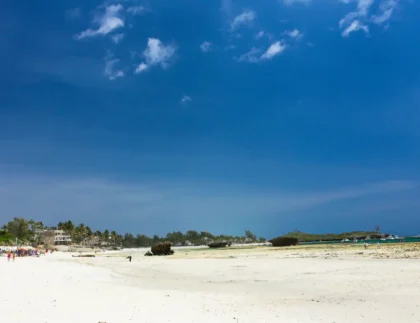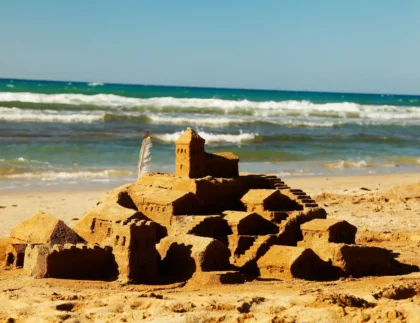Watamu, a small coastal town located in Kilifi County, Kenya, has a rich history and unique architecture that has been influenced by different cultures over time. The town was founded as a Swahili settlement in the 16th century and has since then evolved to incorporate elements of Portuguese, Arab, and British influences.
One of the most notable features of the town’s architecture is the Swahili-style buildings with intricately carved wooden doors, Arabic inscriptions, and verandas. These houses have thick coral walls that help to keep the interiors cool during the hot weather. The Swahili architecture can be seen in buildings such as the Gede Ruins, which is a UNESCO World Heritage Site and is believed to have been built in the 12th century.
The Portuguese influence can be seen in the 16th-century Vasco da Gama Pillar, which marks the arrival of the Portuguese explorer in East Africa. The pillar is made of coral stone and stands on a raised platform overlooking the sea. The Fort Jesus in nearby Mombasa, built by the Portuguese in the 16th century, is another notable example of Portuguese architecture in the region.
Arab influence is evident in the Swahili culture, language, and cuisine of the region. Arab traders introduced Islam to the coast, and many of the local people converted to the religion. The Swahili language is a blend of Arabic, Bantu, and Portuguese languages, and it is widely spoken in the region. The influence of Arab cuisine can be seen in dishes such as biryani, pilau, and samosas, which are popular in the region.
The British influence is evident in the colonial-style buildings such as the Malindi District Commissioner’s Office, which was built in the early 20th century. The building now houses a museum that showcases the history and culture of the region.
In addition to the historical architecture, the town also has several modern buildings that cater to the needs of visitors, including resorts, hotels, and shopping centers. GK Palms is one such resort that offers modern amenities while still showcasing the local architecture and culture. The resort has Swahili-style villas that have been designed to incorporate traditional elements while still providing guests with modern amenities.
In conclusion, Watamu’s architecture and history are a blend of different cultures that have left their mark on the town over time. Visitors can learn about the town’s history by exploring its ancient ruins, colonial buildings, and modern structures. The GK Palms resort offers visitors an opportunity to experience the unique Swahili-style architecture while still enjoying modern amenities.






